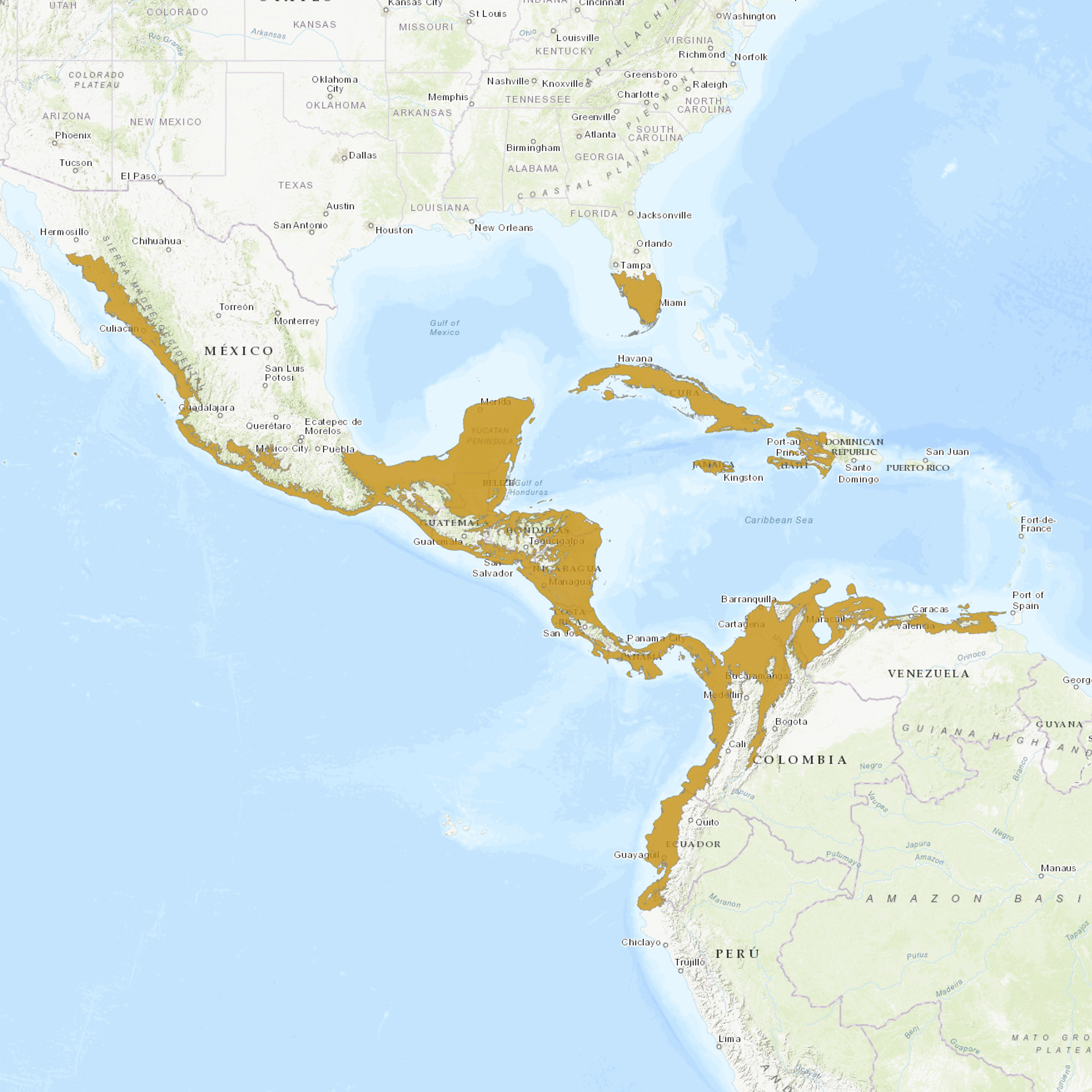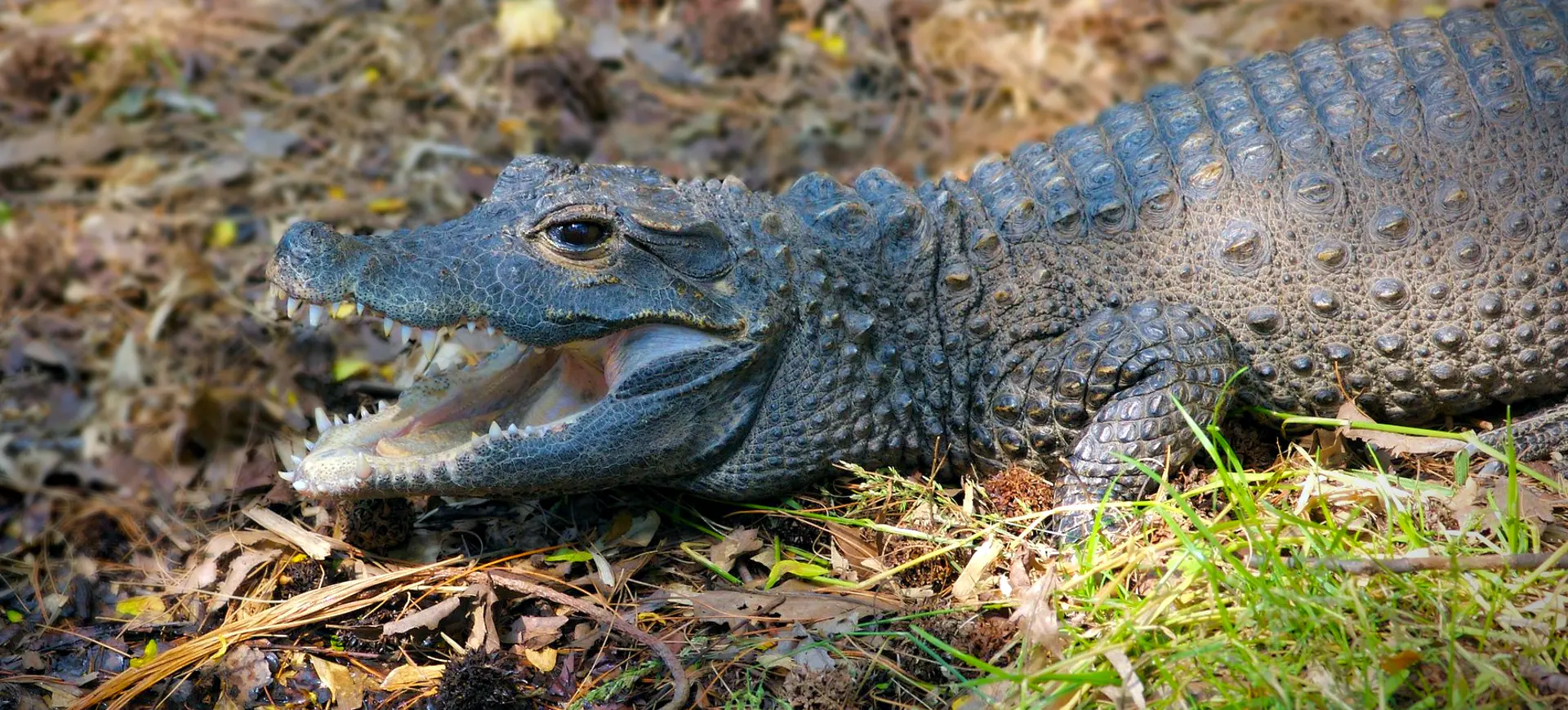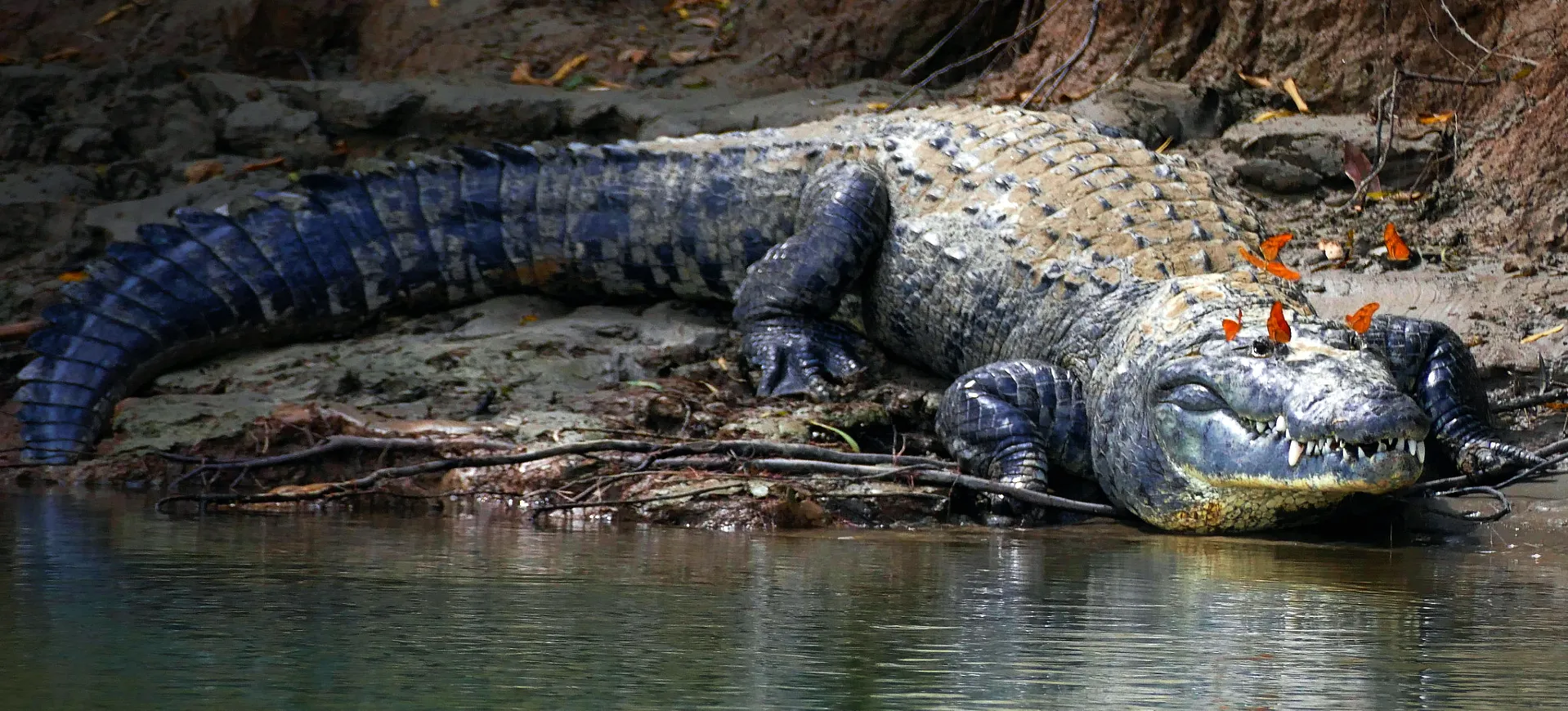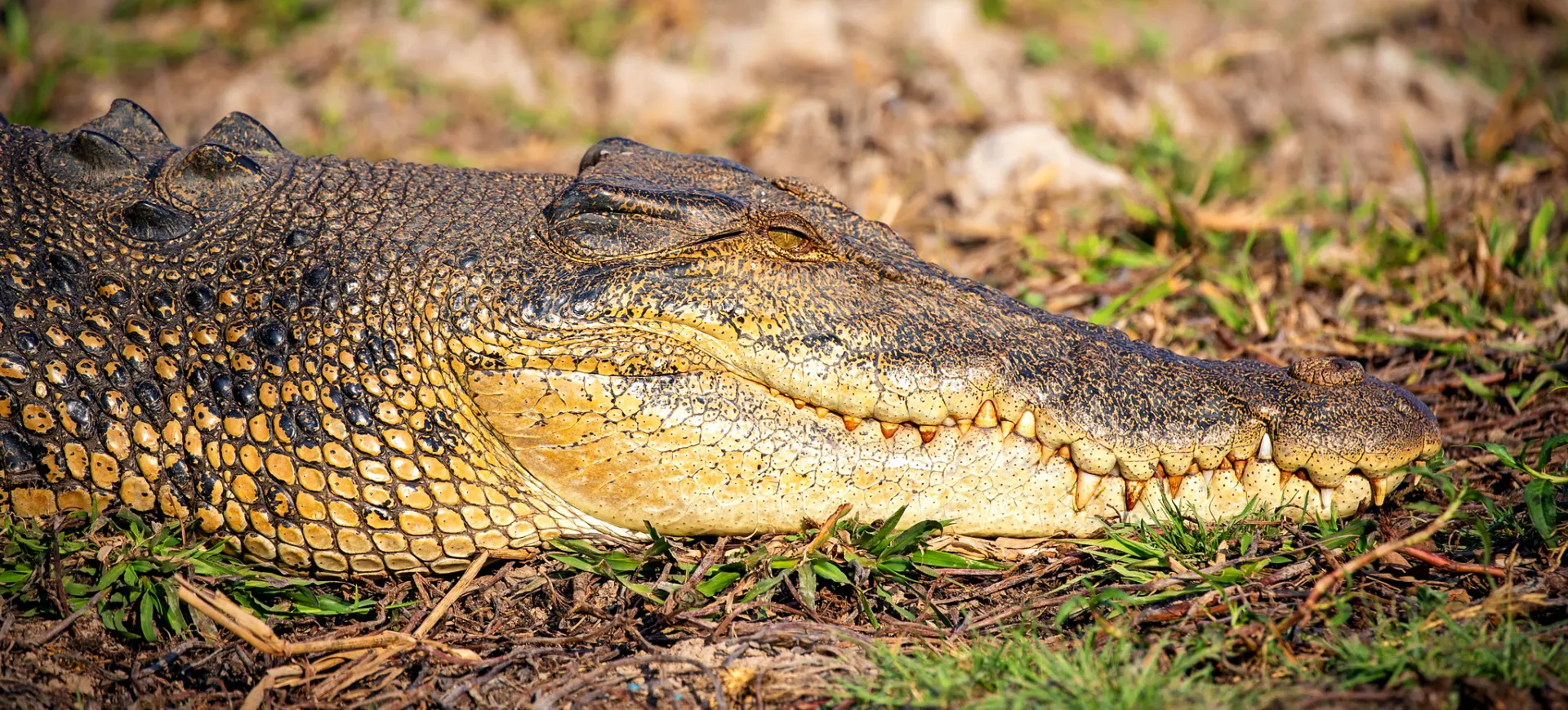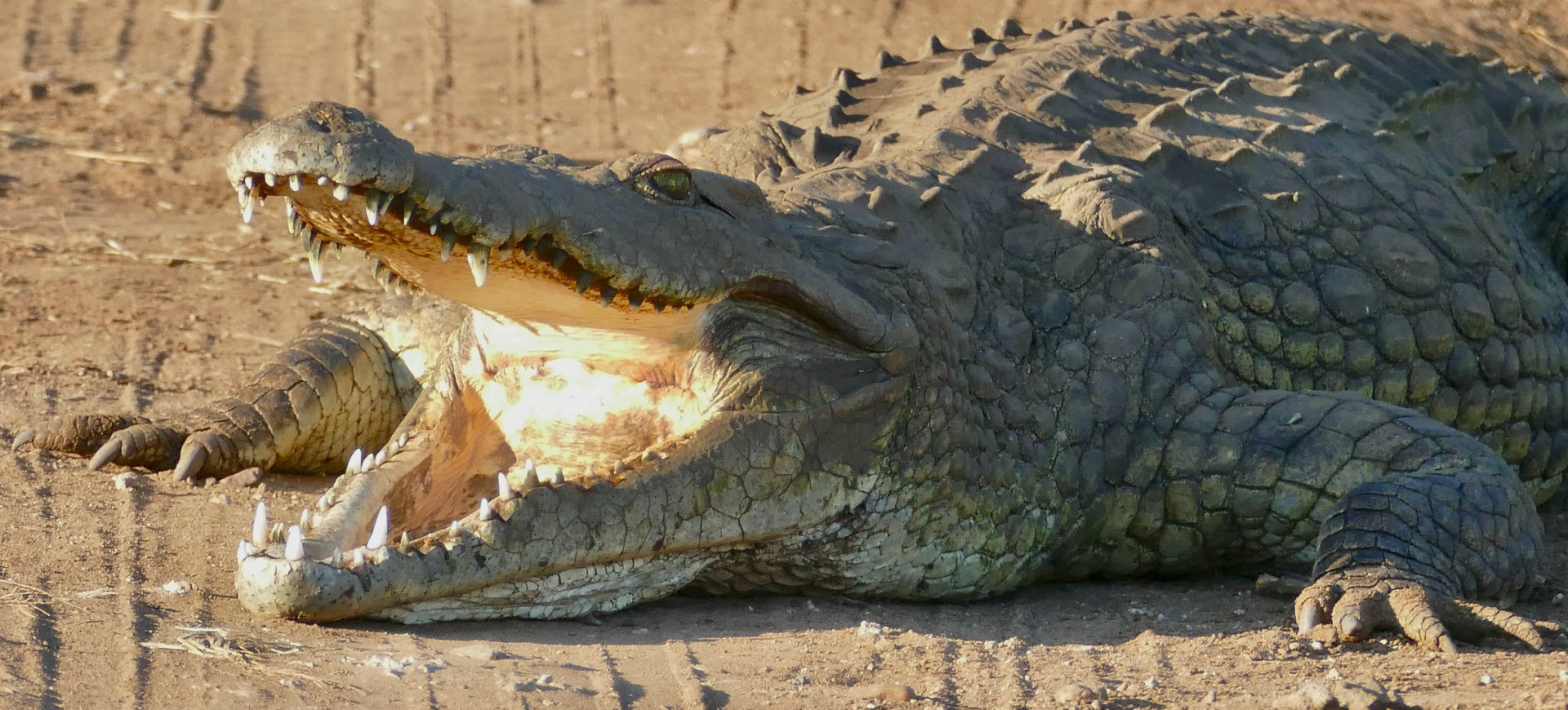Overview
The American crocodile (Crocodylus acutus) is a large, predatory reptile found primarily in coastal and riverine habitats. This species is known for its broad snout and extensive size, making it one of the largest crocodile species. American crocodiles are typically shy and reclusive, often avoiding human contact when possible. They are primarily nocturnal hunters, relying on stealth and ambush tactics to capture their prey.
American crocodiles inhabit various environments, including freshwater lakes, rivers, and brackish coastal areas. Their distribution spans from the southern tip of Florida to parts of Central and South America. These crocodiles prefer warm climates and can be found in saline and freshwater ecosystems. Their adaptability to different environments makes them a resilient species, though they are sensitive to changes in water salinity and temperature.
The species has faced numerous threats due to habitat destruction, illegal hunting, and human encroachment. Conservation efforts have been implemented in various regions to help stabilize and increase their population numbers. Despite these efforts, the American crocodile remains vulnerable and is protected under various international and national regulations. Ongoing research and habitat protection are essential to ensure the long-term survival of this species.
Taxonomy
Kingdom
Phylum
Class
Order
Family
Genus
Species
Type
Current distribution:
The American crocodile's range extends from the southern tip of Florida through the Caribbean and along the coasts of Central and South America. Notable populations exist in Cuba, Jamaica, the Dominican Republic, and Haiti. They are found in Belize, Guatemala, Honduras, Costa Rica, and Panama in Central America. South American populations are present in Colombia, Venezuela, and along the Pacific coast of Ecuador and Peru.
In the United States, their presence is mainly restricted to the southernmost parts of Florida, particularly in the Everglades and Biscayne National Park. These populations have faced significant pressures from habitat loss and human activities. Conservation measures have been implemented to protect nesting sites and reduce human-crocodile conflicts. As a result, some populations have shown signs of recovery, although they remain vulnerable.
Physical Description:
The American crocodile has a robust, elongated body with a broad snout and powerful jaws lined with sharp, conical teeth. Their skin is rough and heavily armored with bony plates called osteoderms. Coloration ranges from gray to olive-brown, with a lighter underbelly that helps with camouflage in their aquatic environments. Males are generally larger than females, with some individuals reaching lengths of up to 20 feet (6 meters).
Juveniles have a more pronounced yellowish hue with darker cross-banding, which fades as they mature. Their limbs are strong and muscular, aiding their ability to swim and move swiftly on land. The eyes and nostrils are positioned on the top of the head, allowing them to breathe and see while mostly submerged. Their tails are powerful and laterally compressed, making them excellent swimmers.

Lifespan: Wild: ~65 Years || Captivity: ~75 Years

Weight: Male: 880-1100 lbs (400-500 kg) || Female: 440-770 lbs (200-350 kg)

Length: Male: 13-20 ft (4-6 m) || Female: 10-13 ft (3-4 m)

Height: Male: 18-24 in (45-60 cm) || Female: 15-20 in (38-50 cm)

Top Speed: 20 mph (32 km/h)
Characteristic:
Native Habitat:
American crocodiles are typically found in tropical and subtropical regions where water temperatures remain warm year-round. Their habitats include coastal lagoons, estuaries, mangrove swamps, and river deltas. These environments provide the necessary conditions for nesting, feeding, and thermoregulation. Mangrove forests are particularly important as they offer abundant food sources and protection for juvenile crocodiles.
Inland populations are found in freshwater lakes, rivers, and reservoirs. These habitats often have dense vegetation that provides cover and hunting opportunities. The species prefers calm, shallow waters, which are ideal for nesting. Seasonal water levels and salinity changes can influence their habitat use and movement patterns.
Biogeographical Realms:
Continents:
Countries:
Diet:
Diet & Feeding Habits:
The American crocodile is a carnivorous predator that primarily feeds on fish, birds, small mammals, and occasionally carrion. Juveniles consume a diet rich in invertebrates like insects and crustaceans, gradually shifting to larger prey as they grow. Their hunting technique involves lying in wait near water edges to ambush unsuspecting prey, using their powerful jaws to capture and drown their targets. They are also known to scavenge and will consume carcasses if available.
Their diet can vary depending on their habitat and the availability of prey species. In coastal regions, they may feed on marine organisms such as crabs and turtles. In freshwater environments, fish and amphibians are more common in their diet. Their slow metabolism allows them to survive on fewer meals than many other predators.
Mating Behavior:
Mating Description:
American crocodiles have a polygynous mating system, where males may mate with multiple females during the breeding season. Courtship begins in the dry season when males establish territories and attract females through vocalizations and displays. Females lay 30-60 eggs in nests built from vegetation and soil. Nesting sites are usually on sandy banks, coastal beaches, or river margins.
Incubation lasts about 80-90 days, and the sex of the hatchlings is determined by the nest’s temperature. Warmer temperatures generally produce more males, while cooler temperatures produce more females. The female guards the nest during incubation and assists hatchlings in reaching the water after they emerge. Parental care is minimal after hatching, but some females may remain nearby to protect the young briefly.
Reproduction Season:
Birth Type:
Pregnancy Duration:
Female Name:
Male Name:
Baby Name:
Social Structure Description:
American crocodiles are generally solitary animals, except during the breeding season. Males establish and defend territories, especially during courtship and nesting periods. Females may show some level of social tolerance when nesting sites are nearby. Juveniles often remain in small groups or near maternal territories until they are large enough to defend themselves.
Communication among crocodiles includes vocalizations, body postures, and chemical signals. Bellowing and other sounds are used to establish territory and attract mates. Social interactions can become aggressive, especially between rival males. Despite their solitary nature, crocodiles play a vital role in their ecosystems, influencing the structure of aquatic and terrestrial communities.
Groups:
Conservation Status:
Population Trend:
American crocodile populations are concentrated in regions such as Florida, Central America, and the Caribbean. In recent decades, conservation efforts have gradually increased population numbers, particularly in protected areas. Habitat restoration and legal protections have played a significant role in these improvements. However, many populations remain fragmented and isolated, limiting genetic diversity and long-term viability.
Monitoring programs have been established to track population trends and inform conservation strategies. Public awareness campaigns aim to reduce human-crocodile conflicts, which significantly threaten their survival. Despite these efforts, illegal hunting and habitat destruction continue to pose challenges. Ongoing research and adaptive management are crucial for sustaining population growth.
Population Threats:
Habitat loss due to coastal development, agriculture, and urbanization is a major threat to the American crocodile. Wetland drainage and alteration of natural water flow can destroy critical nesting and feeding areas. Illegal hunting for their skin and meat also significantly impacts their populations. Human-crocodile conflicts, often resulting from encroachment into crocodile habitats, lead to the killing of these animals.
Pollution and climate change pose additional threats, affecting the health of their habitats and food sources. Rising sea levels and increased salinity can alter coastal and estuarine environments, making them less suitable for crocodiles. Conservation efforts are often hampered by limited funding and resources. Protecting large, contiguous habitats and enforcing anti-poaching laws are essential to mitigate these threats.
Conservation Efforts:
Protected areas and national parks, such as the Everglades in Florida, provide safe havens for American crocodiles. Legal protections under national and international laws, including the Endangered Species Act, help prevent hunting and trade. Community education programs aim to raise awareness about the importance of crocodiles and promote coexistence. Research initiatives focus on understanding crocodile behavior, habitat use, and population dynamics.
Restoration of wetland habitats and establishment of wildlife corridors are critical for connecting fragmented populations. Conservation organizations work with local communities to develop sustainable land-use practices. Captive breeding and reintroduction programs have been implemented in some regions to bolster wild populations. Collaborative efforts between governments, NGOs, and researchers are key to the long-term success of conservation strategies.
Additional Resources:
Fun Facts
- American crocodiles can tolerate brackish water, unlike many other crocodile species.
- They have a specialized valve at the back of their throats, which allows them to open their mouths underwater without drowning.
- Their jaws have tremendous crushing power, capable of exerting a force of over 3,000 pounds per square inch.
- Crocodiles can go months without eating by slowing their metabolism during scarcity.
- They are excellent swimmers, using their powerful tails to propel themselves through water.
- Crocodiles have a unique heart structure with four chambers, similar to birds and mammals.
- Their eyes have a reflective layer called the tapetum lucidum, enhancing their night vision.
- Temperature determines the sex of American crocodile hatchlings during incubation.
- Crocodiles perform a behavior called “high-walking” to traverse uneven terrain.
- Despite their fierce reputation, crocodiles play crucial roles in maintaining the health of their ecosystems.


